
Click the above Computer Enthusiasts to follow us
CFan briefly introduced mini PCs represented by MSI’s Sea Hawk and Intel NUC in the article “The Smallest Comparable to USB Drives! It Turns Out PCs Have So Many Forms?!” This ultra-mini PC, which combined with a monitor becomes an AIO, is gradually gaining more attention from home and business users. Today, we will take NUC as an example to briefly discuss the purchasing ideas for such devices.
Mini PCs and NUC
Intel NUC, Zotac ZBOX, Gigabyte BRIX, and MSI Cubi/Trident are typical representatives in the mini PC field.
Among them, NUC, also known as “Next Unit of Computing,” is a mini barebone desktop PC launched by Intel in 2012. It provides users with a standard “skeleton” (including chassis, adapter, processor, cooling system, and wireless network card), and users only need to purchase and install additional memory and hard drives to become a standard mini host, with almost zero DIY difficulty. Coupled with its stylish, compact, and portable design, it has taken away a significant portion of the market originally belonging to all-in-one computers and laptops.
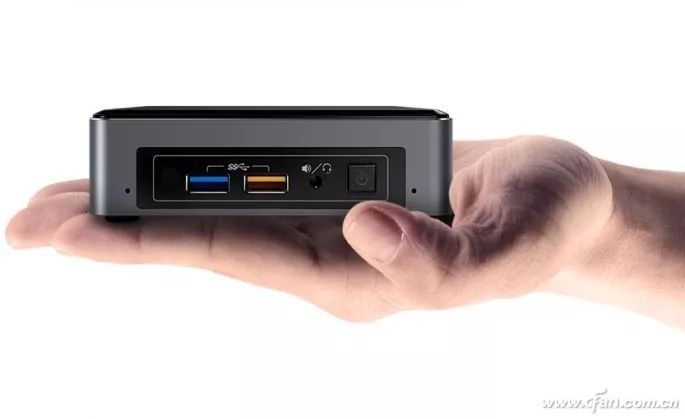
NUC is a “barebone” kit that does not include memory and hard drives by default, making it quite affordable. However, Intel’s official website and major e-commerce platforms (including physical stores) provide complete mini PC hosts with pre-installed memory, hard drives, and Windows 10 systems. The price is slightly higher than purchasing the hardware separately, suitable for users who do not want to deal with the hassle. The following content will focus on NUC barebone systems.
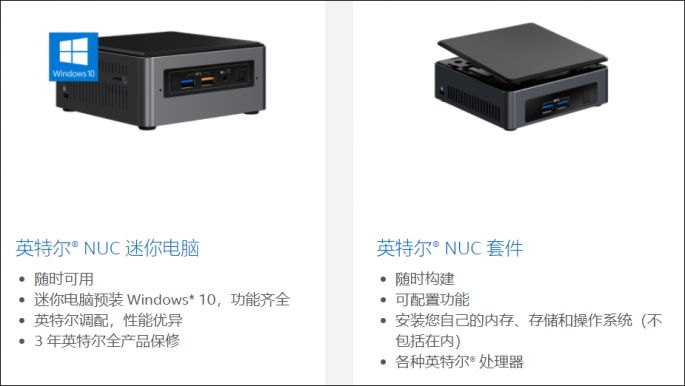
The Mystery of NUC Model Numbers
NUC is the oldest barebone system, and there are currently both new and old models on the market, ranging from Intel’s sixth to eighth generation Core processors, making it a true coexistence of three generations.
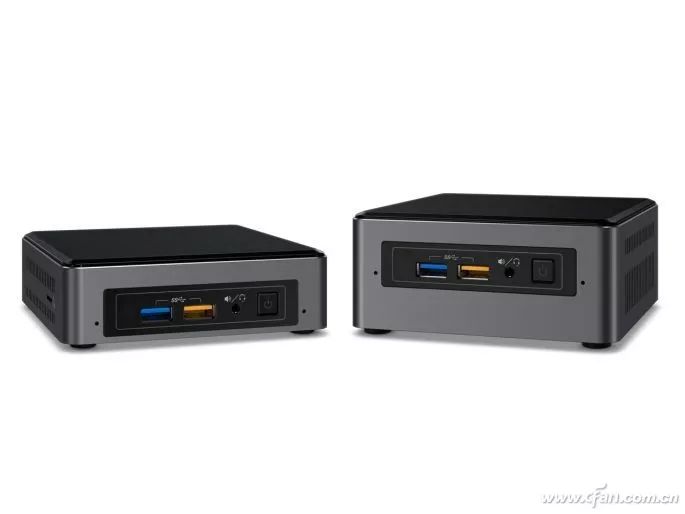
Additionally, NUC includes both “full height” and “half height” product forms, as well as the “Skull Canyon” or “Hades Canyon” customized for gaming enthusiasts, which can easily confuse users unfamiliar with the models. In fact, NUCs of different periods and configurations can be identified from the characters in their model numbers.
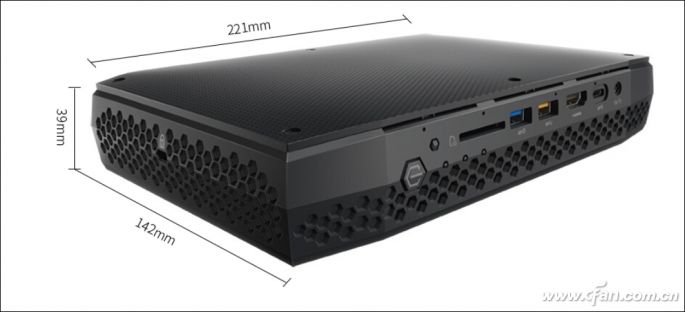
The latest Hades Canyon may look large, but its actual size is only half that of the PS4 Slim game console
“NUC” is the prefix for all NUC device models, and the first digit following it represents the generation of the Core platform currently used by the device; the subsequent characters represent the processor model currently installed; and the final character can be used to distinguish the device form (see table).
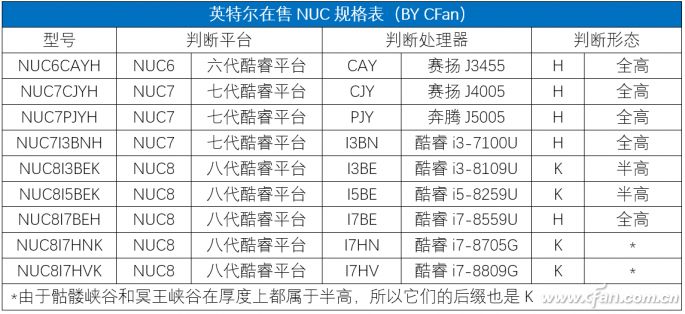
What’s Inside the NUC
As a barebone system, NUC offers an extremely easy disassembly design; simply remove the top cover to DIY. For full-height NUCs like NUC8I5BEH, removing the top cover reveals a 2.5-inch hard drive bay and the PCB motherboard below it, while the half-height NUC is essentially a mini version that achieves a slimmer design by eliminating the 2.5-inch hard drive slot.
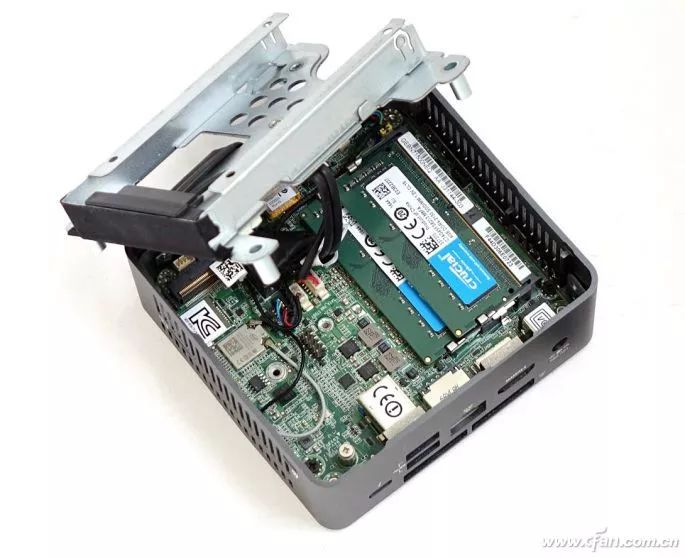
Recent generations of NUC have adopted a design with an onboard wireless network card (non-upgradable), which eliminates the cost of purchasing one. They support PCIe channel M.2 SSD slots and have 2 laptop memory slots. Although the half-height NUC will also reserve a SATA interface, how to place a 2.5-inch hard drive after installation will test the user’s DIY skills.
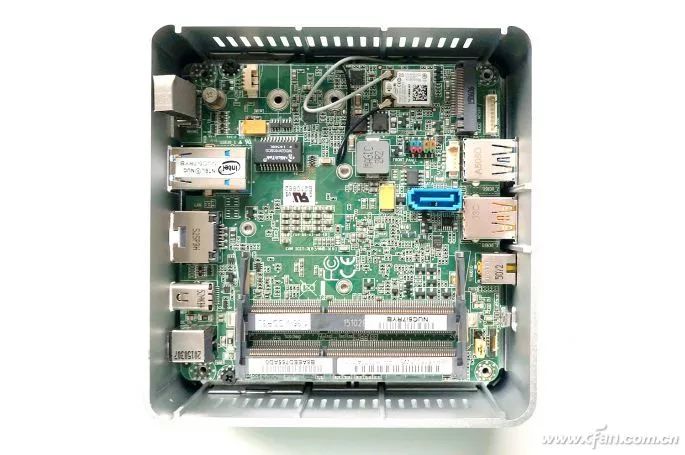
Users who do not care about aesthetics can extend the SATA cable outside the device to connect the 2.5-inch hard drive
If you remove the NUC’s motherboard and flip it over, you will see a large cooling fan and the heat pipes and onboard processor chip hidden beneath the fan. Because the heat pipe of the NUC cooling module is very close to the fins, and the size of the turbine fan is large enough, their cooling effect is significantly better than that of laptops with the same processor, and there is basically no risk of overheating and throttling.
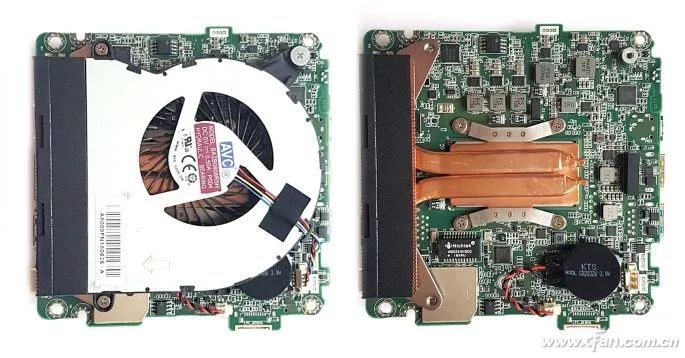
As for the top-tier Hades Canyon in the NUC family, its internal design is luxurious, providing 2 PCIe channel M.2 SSD slots, a more luxurious cooling design, and expansion interfaces comparable to those of desktop PCs.
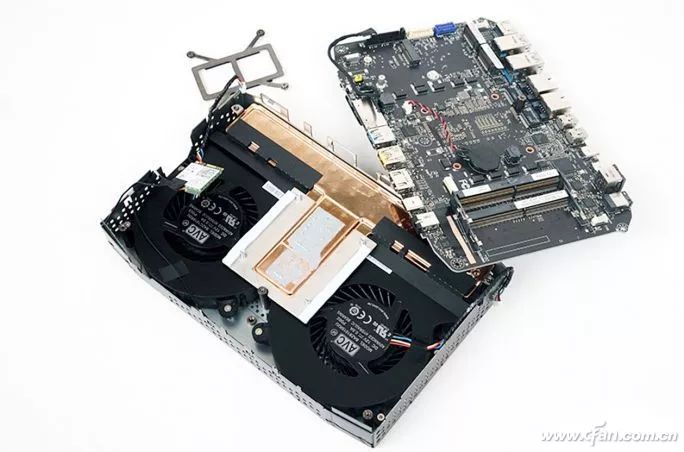
Is NUC’s Performance Adequate?
If you do not have a more powerful desktop or laptop at home, and NUC is your only PC, my suggestion is to directly ignore the low-end models equipped with Celeron and Pentium processors and focus on models with “NUC8,” which are equipped with eighth-generation Core processors.
Most of the eighth-generation Core processors in other brand mini PCs are TDP models specifically for thin and light laptops (such as i5-8250U and i7-8550U), while Intel NUC is equipped with TDPs as high as 28W for i3-8109U, i5-8259U, and i7-8559U, which have higher CPU base frequencies. The CPU performance of i5-8259U/i7-8559U even surpasses that of the newly released i8-8265U/i7-8565U.
The GPU integrated graphics of these three processors have also been upgraded to Iris Plus 650, whose performance is comparable to NVIDIA GeForce MX130. In other words, even the i3-8109U has comprehensive performance comparable to a standalone lightweight laptop priced around 4000 yuan, while the i5-8259U is comparable to a lightweight standalone laptop priced at 5000 yuan.
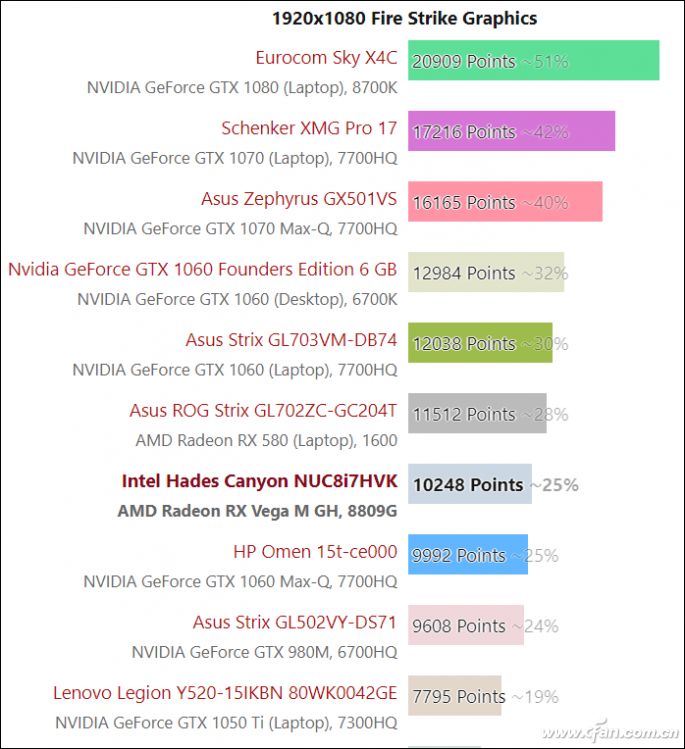
The Hades Canyon equipped with i7-8705G and i7-8809G is even more powerful; they belong to the Kaby Lake-G platform jointly developed by Intel and AMD, with TDPs of 65W and 100W, respectively, and integrate Radeon RX Vega M GH/GL graphics, with 3D performance even surpassing GeForce GTX1060 Max-Q!
Which NUC Is Right for You?
The prices for both the full-height and half-height versions of NUC are the same; users with higher storage space requirements are advised to choose the full-height version. Currently, the prices for NUC8 barebone systems equipped with eighth-generation Core i3, i5, i7, and Hades Canyon on Tmall are 2299 yuan, 2999 yuan, 3899 yuan, and 4999 yuan, respectively. Currently, 8GB DDR4 memory costs about 300 yuan, a 250GB M.2 PCIe SSD costs about 300 yuan, and a mainstream 23.8-inch narrow bezel monitor costs about 600 yuan, which means that with an additional 1200 yuan, you can assemble a standard PC with NUC, and its overall performance is basically on par or slightly higher than that of laptops at the same price, while providing a more stunning and color-accurate visual experience.
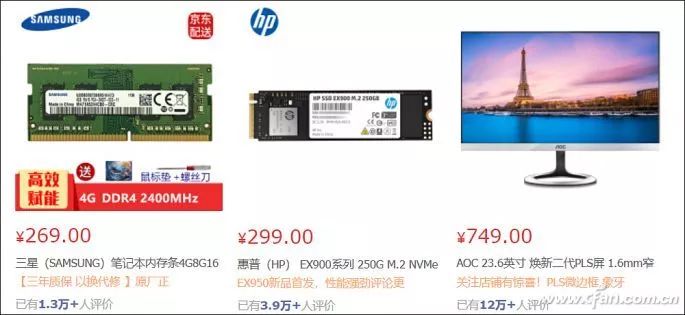
Tip:To fully utilize the performance of the integrated graphics in NUC, dual-channel memory support is needed, so it is recommended to choose a memory combination of 4GB + 4GB or 8GB + 8GB; Core version NUC can support up to 32GB of memory.
Therefore, if you do not have the need to carry a PC for outdoor use or play large 3D games, DIY on the basis of the NUC barebone system is a more reliable choice than directly purchasing a laptop, and it also saves more desktop space compared to traditional desktop and all-in-one computers. As for which NUC to choose, it depends on your actual budget.

Click “Read Original” for more exciting content